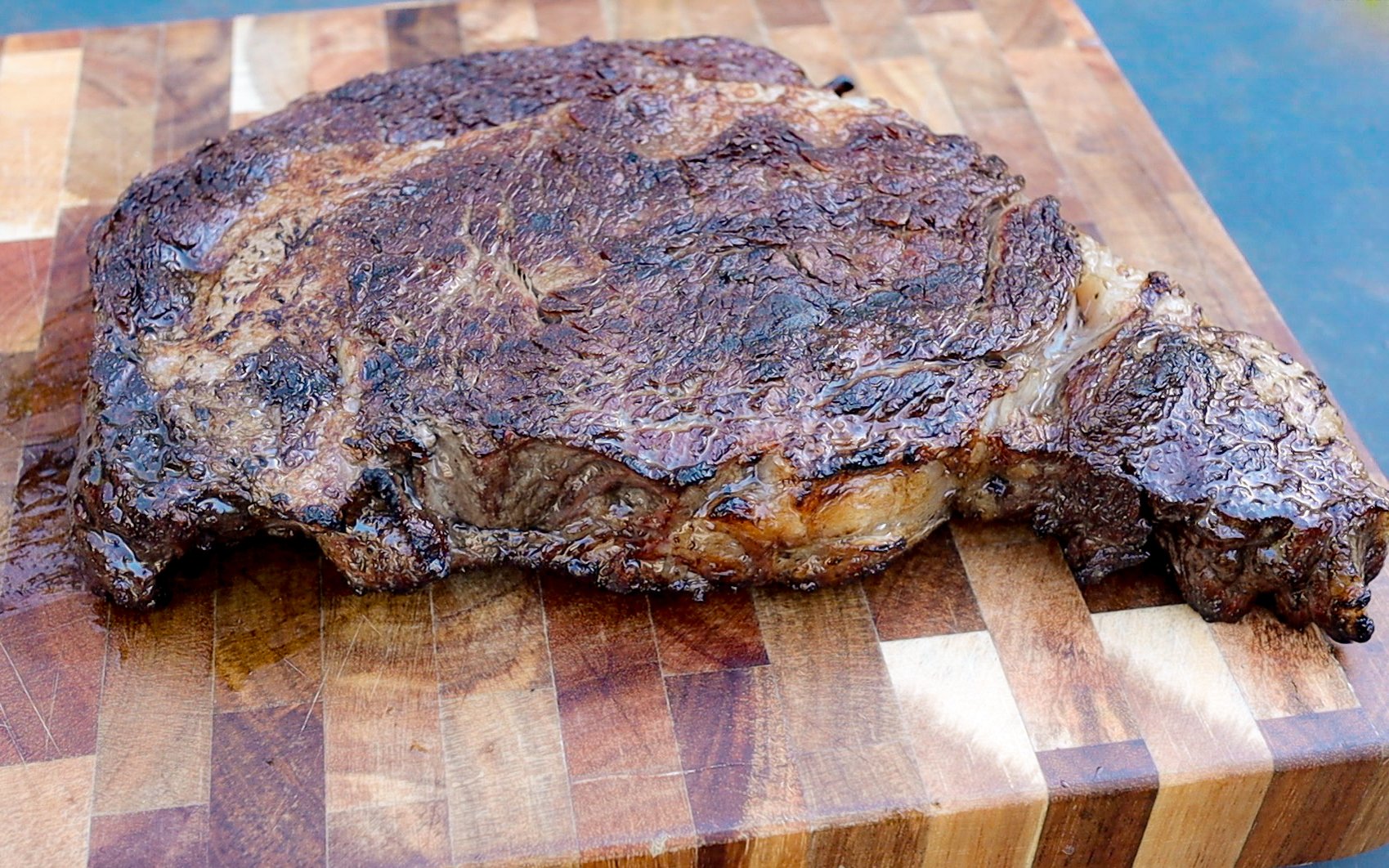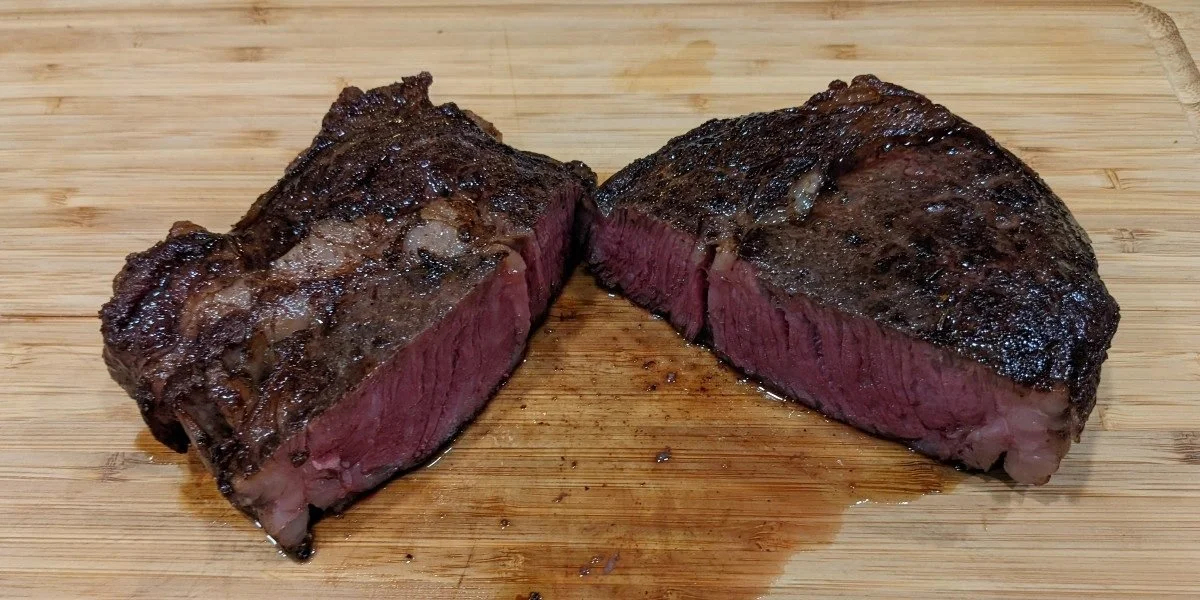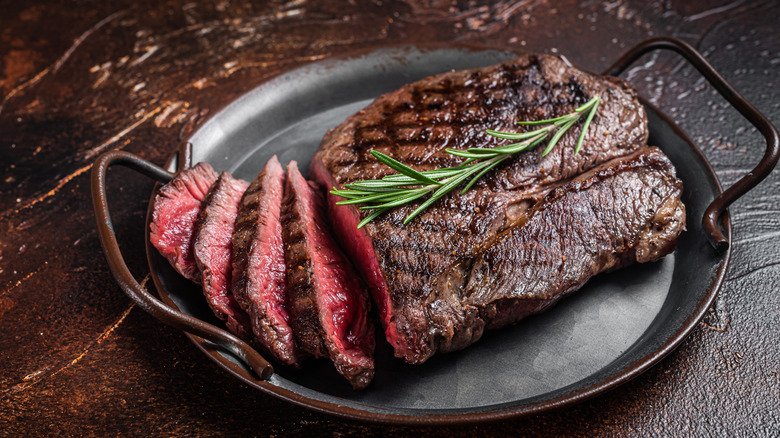How to Get the Perfect Steak Crust: Expert Tips for a Delicious Meal
Discover > Texas Home Cooking > How to Get the Perfect Steak Crust: Expert Tips for a Delicious Meal
Perfecting the crust on steak is an art form sought after by many cooks aiming to prepare a delicious steak. Achieving a crispy crust requires understanding the Maillard reaction, a process yielding the sought-after browning when heat meets proteins and sugars.
Mastering this reaction involves managing heat levels, steak preparation, and choice of cooking fat. Other important factors include marbling, seasoning, and allowing the steak to rest. This article guides these points, focusing on cooking a thicker steak to a medium rare desired temperature.
Understanding Steak
Steak is a cherished meal for many, and achieving the perfect steak crust can elevate the dining experience. To help in this quest, one must first understand different cuts of steak and their characteristics.
There is a variety of steak cuts, each varying in tenderness, flavor, and marbling. Filet Mignon is the most tender cut, with minimal fat, offering a lean and delicate taste. For diners seeking a balance between tenderness and flavor, the Ribeye is an excellent choice, as it has rich marbling and a robust, meaty flavor. New York Strip is known for its tender and juicy quality with moderate marbling, making it a popular choice among steak lovers. The T-Bone and Porterhouse are both favorites for their unique combination of textures and flavors, offering a medley of both the tenderloin and strip steak.
Cooking methods play a significant role in achieving the ideal steak crust. Dry heat methods, such as grilling, broiling, and pan-searing, are the most effective at producing a beautiful crust. Moisture is the enemy of browning, and therefore, using dry heat helps to evaporate any existing surface moisture, allowing for better caramelization of the meat. When it comes to pan-searing, a cast iron skillet is highly recommended due to its heat retention properties.
Steak thickness is another factor to consider when aiming for a perfect crust. Thicker cuts provide more room for error, as they minimize the risk of overcooking the interior while forming a crust. A steak that is at least 1 inch thick will be ideal.
Choosing the right cooking oil is crucial for attaining a gourmet crust. High-smoke point oils, such as avocado, canola, or grapeseed oil (how long does grapeseed oil last?), are ideal because they can withstand high temperatures without burning.
Some additional tips for a flawless steak crust include:
Patting the steak dry with paper towels before cooking to remove excess moisture.
Season the steak generously with salt and pepper to enhance flavor and aid in browning.
Allow the steak to sit at room temperature for about 30 minutes before cooking to ensure even cooking throughout.
Flipping the steak only once during the cooking process, as flipping it too often may interfere with crust formation.
By understanding the different cuts of steak, choosing the right cooking method and oil, and following these tips, one can be well on their way towards achieving the perfect steak crust.
Choosing the Right Cut
Ribeye Steak
The Ribeye steak (What wine goes well with ribeye steak?), known for its rich marbling, offers a perfect balance of flavor and tenderness. It is an excellent choice for achieving a perfect crust because its high-fat content helps to lock in moisture as it caramelizes on high heat. When selecting a ribeye, keep an eye out for a good amount of marbling to ensure superior crust development.
Strip Steak
The Strip steak, also known as the New York strip, is a tender and moderately marbled cut. This cut is ideal for those who desire a quality crust with a slightly leaner steak. Try to choose a strip steak that is uniform in thickness, which will ensure even cooking and optimal crust formation.
Filet Mignon
Filet Mignon, one of the most sought-after cuts, provides a mild flavor and a tender, buttery texture. Although it can be more difficult to develop a substantial crust due to its low-fat content, it is still suitable for crust enthusiasts. Consider using a high-smoke-point oil and a hot pan to achieve the desired crust on this delicate cut.
Porterhouse Steak
The Porterhouse steak combines two premium cuts - the tenderloin and the strip. This cut is beloved by steak lovers who want a little bit of everything in their meal. To achieve a magnificent crust, focus on the strip side as it tends to have more marbling and fat content than the tenderloin. Manage heat settings to get the optimal crust while ensuring that both sections are cooked to the desired doneness.
Perfecting the Seasoning
Salt and Pepper
A perfect steak crust starts with generous seasoning: kosher or sea salt (how long does sea salt last?) and freshly ground black pepper. The salt aids the Maillard reaction for a desirable crust by drawing out moisture. Let the steak rest with the seasonings for 40 minutes to 24 hours in the fridge for the best results.
Brief tips on salting:
Use kosher salt (how long does kosher salt last?) or sea salt
Apply the salt generously
Allow the steak to sit with the salt for 40 minutes to 24 hours
Herb Rub
Flavor your steak with a herb rub. Choose and finely chop your favorite herbs like rosemary, thyme, and oregano. Mix with olive oil to make a paste, and apply on both sides of the steak before grilling. This method improves taste and gives off a pleasant aroma as the herbs' oils are released.
Herb rubs key points:
Choose a mix of fresh herbs (e.g., rosemary, thyme, oregano)
Finely chop herbs and create a paste with olive oil
Apply herb rub just before cooking the steak
Garlic Butter
For added richness, use garlic butter to baste the steak. Simply melt unsalted butter, add minced garlic, let it infuse for a few minutes, then apply it to the steak while cooking for a flavorful crust.
Garlic butter basting basics:
Melt unsalted butter and add minced garlic
Allow garlic to cook gently to infuse the butter
Baste the steak as it cooks or add to the pan while finishing cooking
Guide to Cooking Techniques
Grilling
Grilling, a favored technique for steak crust, involves preheating the grill to 500°F (260°C), oiling the grates, and searing the steak on each side for 2-3 minutes. This is followed by reduced heat and cooking to the desired internal temperature. It's crucial to consider a few key factors when grilling:
Heat: High heat is crucial for a great crust.
Flip: Turn the steak only once or twice to get an even crust.
Thickness: Thicker steaks (1-2 inches) work best for grill cooking.
Pan-Seared
Pan-searing is an excellent method for achieving a delicious crust on a steak. Follow these main steps:
Preheat a heavy pan, such as cast iron, over medium-high heat.
Add a small amount of oil with a high smoke point (e.g., grapeseed or avocado oil).
Once the oil is hot, place the steak in the pan and sear for about 2-4 minutes on each side. The high heat will form a crust on the steak's surface as it sears.
To finish cooking to the desired internal temperature, you may need to lower the heat or place the pan in the oven, preheated to 375°F (190°C).
Keep in mind:
Use a proper pan: A cast-iron skillet or stainless-steel pan will retain heat and give an even sear.
Control heat: Adjust the heat as needed to avoid burning.
Broiling
Broiling is an alternative method for achieving a steak crust without using direct heat. Set the oven's broiler setting and preheat for about 10 minutes. Position an oven rack so that the steak will be about 3-4 inches from the heat source. Carefully place the steak on a broiler pan and slide it into the oven.
Tips for broiling success:
Preheat: Ensure the broiler is sufficiently preheated before cooking.
Distance from heat source: Keep the steak within 3-4 inches of the heat source.
Watch closely: Broiling cooks quickly, so check the steak and flip as needed to achieve the desired crust and internal temperature.
Mastering the Perfect Crust
Preparing the Pan
For a perfect steak crust, choose a clean, dry, oven-safe skillet like cast iron or stainless steel. Preheat it on medium-high until hot.
Searing the Steak
Heat the pan, add high smoke-point oil, and let it warm for 30 seconds. Dry and season the steak, then sear it in the pan without moving for 2-3 minutes on each side till a brown crust forms.
To ensure even browning, you can occasionally lift the steak and check the crust. When the desired crust forms, use tongs to briefly sear the edges of the steak to seal in moisture and flavor.
Resting the Steak
For a perfect crust, let the steak rest on a board or plate, uncovered for a minimum of 5 minutes after cooking. This process helps the juices to settle, ensuring a tender, juicy steak with a crisp crust. Cutting it too soon results in a loss of juices and a less flavorful steak.
Steak Serving Suggestions
Red Wine Pairing
When serving a steak with the perfect crust, it is important to pick a red wine that complements the flavors. A bold and full-bodied wine enhances the taste of the steak and brings out its savory flavors. Consider the following choices:
Cabernet Sauvignon: This red wine is known for its strong tannin structure, which helps to cut through the richness of the steak.
Malbec: With its rich fruit flavors and subtle spices, Malbec pairs well with the crust's complex flavors.
Shiraz: The peppery notes in Shiraz beautifully complement the charred crust.
It's important to remember that personal preference plays a role in wine pairings, so offering a few choices can ensure that everyone at the table finds a wine to their liking.
Side Dishes
The perfect steak crust deserves to be matched with equally delicious side dishes. Here are some classic and flavorful options that won't overpower the star of the show:
Potatoes: There are numerous ways to prepare potatoes to pair with a steak. Some popular choices include:
Garlic mashed potatoes
Roasted rosemary potatoes
Classic baked potatoes with your choice of toppings
Vegetables: Balance the rich flavor of the steak with fresh, flavorful vegetables. A few options include:
Steamed asparagus or green beans
Roasted brussels sprouts with bacon
Grilled seasonal vegetables
Salad: A light, crisp salad with some acidity and brightness can cleanse the palate between bites of the crusty steak. Consider these combination ideas:
Arugula with lemon vinaigrette, cherry tomatoes, and shaved parmesan
Mixed greens with a balsamic dressing, dried cranberries (how long do dried cranberries last?), and gorgonzola
With these red wine pairing and side dish suggestions, the perfect steak crust can be enjoyed as part of a well-rounded and delicious meal.




